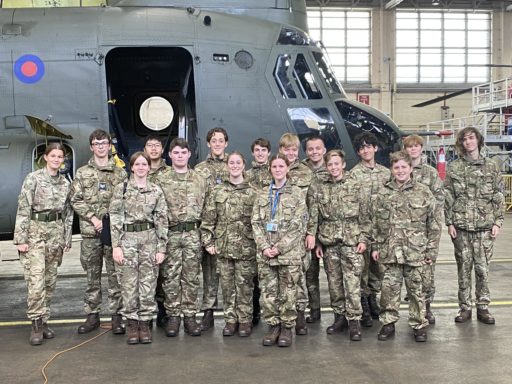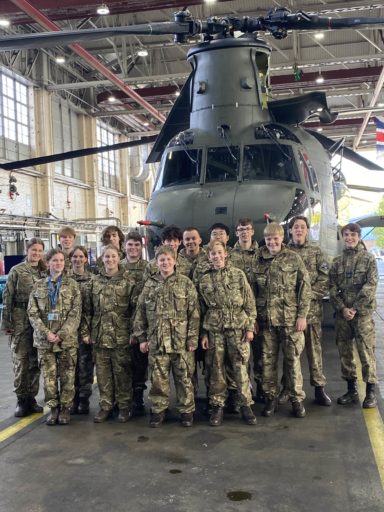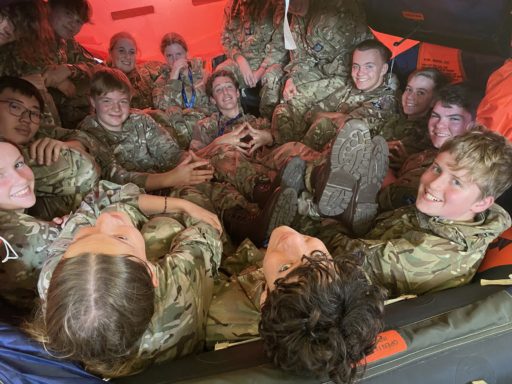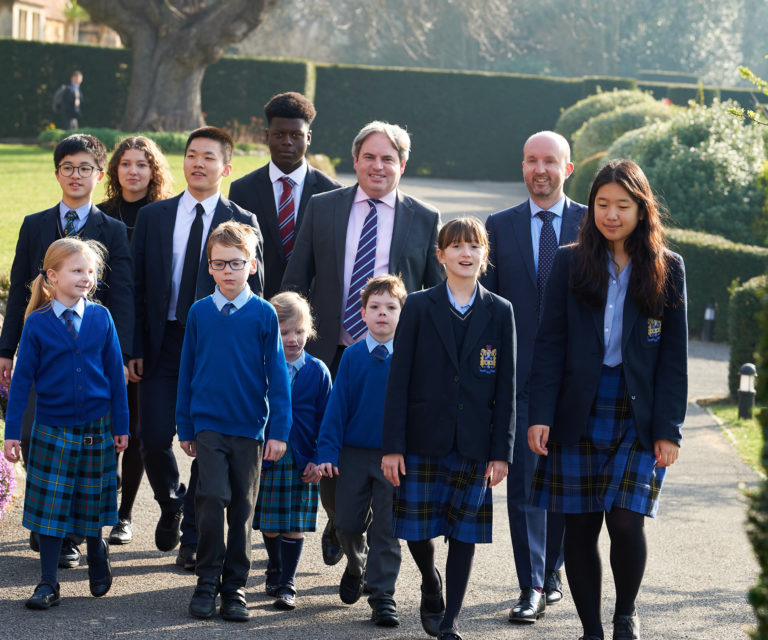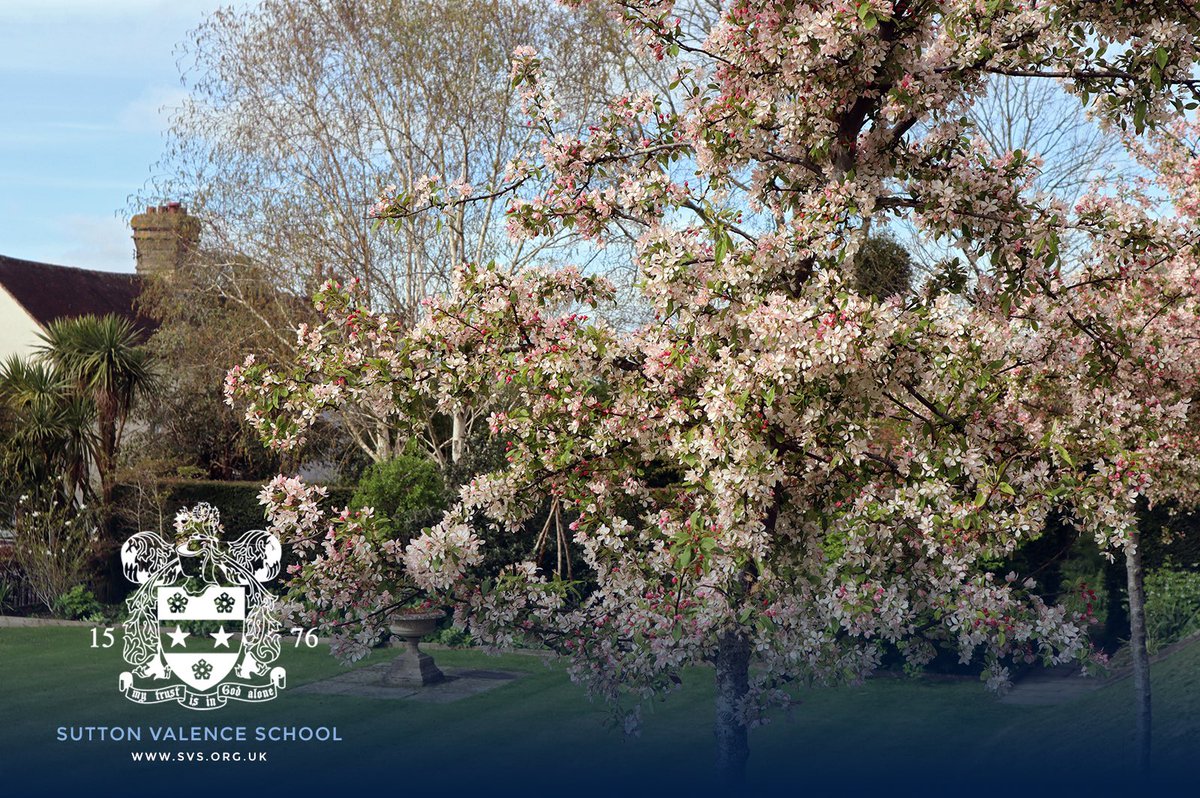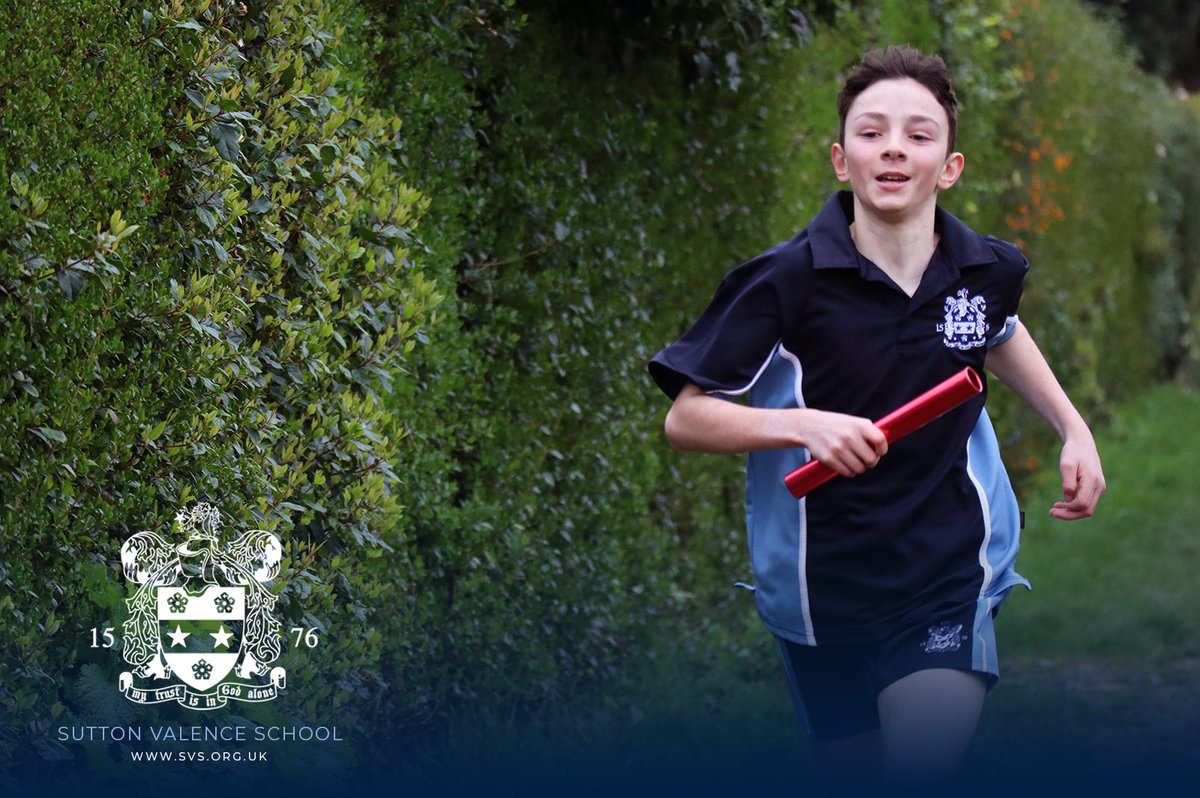Wednesday 19th and Thursday 20th of October saw the CCF embark on their field days, and the RAF Section went off to visit RAF Odiham on the 19th, the home of British Chinooks. Thomas Dolan reports on the experience below.
“The Boeing CH-47 Chinook is one of the most famous and recognisable helicopters ever built, with its distinctive noise and double rotor, and because of a most distinguished service with numerous nations and in many conflicts over the last 60 years.
Flight Sergeant Howard “Howie” was our tour guide, and he took the section round the hanger to see a host of the RAF’s mixed models of Chinooks, sparing no expense in describing the grim details of service, the MOD’s budget, and the inner workings of the Helicopter.
The Chinook is a heavy lift and support aircraft, tasked with carrying everything from troops around the battlefield, to supplies, vehicles, and even lifting downed helicopters (and sometimes planes) from their crash-sites.
However, the RAF’s compliment, as Howie described, were hardly brand new. Except for recent arrivals to No 7 Squadron, who support the Special Forces (the SBS and SAS), most of the Chinooks on base were modified birds from as early as the Vietnam War.
One aircraft, which had only just retired, known as “Bravo-November”, was the sole surviving Helicopter from the sinking of the Atlantic Conveyor during the Falklands Conflict of 1982, which infamously saw the destruction of nearly all of Britain’s helicopters deployed to the islands.
Most of the Chinooks were old, but were modified and maintained, allowing them to stay on well past their proverbial sell-by date. Modifications included an advanced autopilot named “George”, a nickname originating from WWII, in which pilots nicknamed their early autopilot systems in reference to the aircrafts’ official owner, King George VI.
They also included defence systems, from-infrared-distracting flares to radar obscuring chaff, explained by Howie in the context of dodging Taliban missiles in Afghanistan, with one Chinook having taken a direct hit and survived, whilst carrying Afghan Government officials. The Section of rotor blad with the hole in it, was on display in the squadron bar.
When on board a Chinook in the hanger, Howie explained the layout of the large aircraft, describing operations with the large hook, capable of lifting at least several tons, from other helicopters, to ground vehicles, to Harrier Jump-Jets.
The Flight Sergeant spoke fondly of the camaraderie of the crew and the RAF, in the face of sometimes lacking equipment, and the apparent refusal of the MOD to spend adequately.
Following lunch, and witnessing an engine test of a Chinook, the section was taken to the armoury, to get a hands-on with the small arms carried by the crew and soldiers, and the Chinook’s own weapons.
The armoury showed off their L85A2 rifles, which as cadets we were familiar with, but also the Glock 17 sidearm and the FN MAG (L7A2) GPMG. Some older weapons, in the form of an L1A1 SLR, which served the British army from the 1950’s to the 1990’s, two examples of Soviet AK-47s, and an AKM were also handed over for us to look at.
The Chinooks in British service are armed with a mounted M60 Machine gun, on the rear door, dating back to Vietnam.
The highlight however, was getting up close and dry firing an M134 Minigun. This 20kg behemoth can churn out some 3000 rounds per minute (50 rounds per second) thanks to its battery powered rotating barrels. Unlike in the movies, this weapon cannot be handheld, and instead is bolted to a window on one side of the helicopter, and a door on the opposing side, giving the Chinook a 360° coverage of defensive firepower, with the M60 covering behind. Even without the bullets firing, the minigun was unimaginably loud.
The day rounded off with another talk from Howie on survival training in the Chinook force. Maritime survival was given emphasis, and Cadet Warrant Officer Callum Davis (Upper Sixth), along with one of the fourth form cadets, Harry Mewitt, dressed in the bright orange gear before inflating their lifejackets. After trying some survival food rations, the entire section was then bundled into a life-raft meant for ten people, though Howie claimed that 38 cadets had once got in, but for us 16 was plenty too many.
The actual survival training, to be refreshed every three years, involved being dunked upside down in a swimming pool in a replica shell of a Chinook and then being expected to escape after being rocked about and disorientated. Despite not sounding like the most enjoyable way to spend an afternoon, with Howie adding, “They don’t tell you that at the Careers Office”, it did not stop the Flight Sergeant speaking highly of his time with the RAF, some 13 years so far.
With what had been a very interesting and insightful day at RAF Odiham, we headed home, with much food for thought and a wealth of new knowledge of both life in the RAF, and the operations of one of its most important aircraft; the Chinook.”
